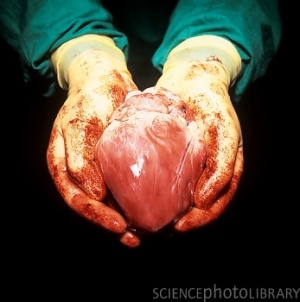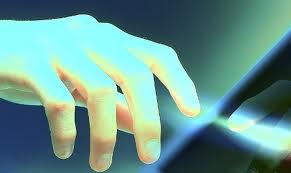Blog Archives
Artificial and Bioengineered Organs Can End the Shortage
There are over 117,000 people on the U.S. Transplant list and hundreds of thousands more around the world. The shortage of transplantable human organs is severe everywhere and it is unlikely the supply will ever even come close to the demand. To depend on organ donation to save the lives of those who need organs is just plain unrealistic, that’s why we must devote as much time, energy and money as we can to develop alternatives to human organs…and there are many.
In the coming weeks, Bob’s Newheart will explore the alternatives to human organ donation and how soon they might be available. There is no end to the number of ideas scientists, engineers and researchers have but it takes time to sort through them, find the money for further research and then send each through some kind of trial. The time from concept to practical use is usually quite long but there are many alternatives already in the pipeline. Below you’ll find just a few and we will expand on them in weeks to come.
A Heart Without a Pulse
 As many as five million Americans suffer some form of heart failure, but only about 2,000 hearts a year become available for transplant. The obvious solution to that scarcity is to build an artificial heart, and how hard could that be? The heart’s just a pump, after all, and people have been making pumps since the Mesopotamians invented the shadoof to raise river water 3,000 years before the birth of Christ.
As many as five million Americans suffer some form of heart failure, but only about 2,000 hearts a year become available for transplant. The obvious solution to that scarcity is to build an artificial heart, and how hard could that be? The heart’s just a pump, after all, and people have been making pumps since the Mesopotamians invented the shadoof to raise river water 3,000 years before the birth of Christ.
To understand why they still haven’t succeeded, pick up a two-pound barbell and start curling it. Two pounds: nothing. But see how long you can keep it up. Twenty minutes? An hour? Two? Your heart does that all day and all night—35 million beats a year—for as long as you live, without ever taking a rest. Manufacturing a metal and plastic heart capable of beating that way for more than about 18 months has so far proved impossible. But, now, there’s the possibility of a continuous flow artificial heart and it’s working well in experiments.
Growing Organs in a lab
In June 2011, an Eritrean man entered an operating theater with a cancer-ridden windpipe, People had received windpipe transplants before, but this one was different. His was the first organ of its kind to be completely grown in a lab using the patient’s own cells.
The windpipe is one of the latest successes in the ongoing quest to grow artificial organs in a lab. The goal is deceptively simple: build bespoke organs for individual patients by sculpting them from living flesh on demand. No-one will have to wait on lengthy transplant lists for donor organs and no-one will have to take powerful and debilitating drugs to prevent their immune systems from rejecting new body parts.
Researchers are making use of advances in knowledge of stem cells, basic cells that can be transformed into types that are specific to tissues like liver or lung. They are learning more about what they call scaffolds, compounds that act like mortar to hold cells in their proper place and that also play a major role in how cells are recruited for tissue repair.
Tissue engineers caution that the work they are doing is experimental and costly, and that the creation of complex organs is still a long way off. But they are increasingly optimistic about the possibilities.
Bioartificial Liver
Boston company HepaLife is working on a “bioartificial” liver using a proprietary line of liver stem cells. Once the patient’s blood is separated into plasma and blood cells, a external bioreactor unit with those stem cells inside can reduce levels of toxic ammonia by 75% in less than a day.
Bioartificial Hand
Smar tHand is a bioadaptive hand that can actually feel. Its 40 sensors communicate back and forth directly with the brain using nerve endings in the arm. The hand sends its sensory input to the brain, and the brain sends instructions for movement to the hand. The result? It can pick up a plastic water bottle without crushing it, or pour a drink without spills.
tHand is a bioadaptive hand that can actually feel. Its 40 sensors communicate back and forth directly with the brain using nerve endings in the arm. The hand sends its sensory input to the brain, and the brain sends instructions for movement to the hand. The result? It can pick up a plastic water bottle without crushing it, or pour a drink without spills.
BioLung
MC3 BioLung is a soda-can-shaped implantable device that uses the heart’s pumping power to move blood through its filters. It’s designed to work alongside a natural lung, exchanging oxygen from the air with carbon dioxide from the bloodstream. So far, it’s been tried on sheep, where six of the eight animals on the BioLung machine survived for five days. Human trials are expected within the next couple of years.
3D Organ Printing
Organ printing, or the process of engineering tissue via 3D printing, possesses revolutionary potential for organ transplants.
The creation process of artificial tissue is a complex and expensive process. In order to build 3D structures such as a kidney or lung, a printer is used to assemble cells into whichever shape is wanted.
For this to happen, the printer creates a sheet of bio-paper which is cell-friendly. Afterwards, it prints out the living cell clusters onto the paper. After the clusters are placed close to one another, the cells naturally self-organize and morph into more complex tissue structures. The whole process is then repeated to add multiple layers with each layer separated by a thin piece of bio-paper. Eventually, the bio-paper dissolves and all of the layers become one.
Using the patient’s own cells as a catalyst, artificial organs may soon become mainstream practice among treatment centers worldwide. As the health of the nation delves down to record negatives, organ printing may be the establishment’s answer to a number of preventable conditions.
The above alternatives to human organs are but the tip of the iceberg. Medical science and technology are on the verge of incredible breakhroughs that will extend life and, at some point, end the need for human organ donation, anti-rejection drugs and maybe even invasive surgery.
There is no way human organ donation will ever be able to meet the demand for organs. Even if donation were mandatory there likely would not be enough healthy organs to be able to provide one for everyone who needs one. That’s why Facebook’s Organ Transplant Initiative and Bob’s Newheart strongly supports more government and private investment in developing mechanical organs, bio-mechanical organs, organ re-generation, organ cloning and other technologies like 3D printing.
Bob Aronson of Bob’s Newheart is a 2007 heart transplant recipient, the founder of Facebook’s nearly 2,500 member Organ Transplant Initiative and the author of most of these donation/transplantation blogs.
You may comment in the space provided or email your thoughts to me at bob@baronson.org. And – please spread the word about the immediate need for more organ donors. There is nothing you can do that is of greater importance. If you convince one person to be an organ and tissue donor you may save or positively affect over 60 lives. Some of those lives may be people you know and love.
Please view our video “Thank You From the Bottom of my Donor’s heart” on http://www.organti.org This video was produced to promote organ donation so it is free and no permission is needed for its use.
If you want to spread the word personally about organ donation, we have another PowerPoint slide show for your use free and without permission. Just go to http://www.organti.org and click on “Life Pass It On” on the left side of the screen and then just follow the directions. This is NOT a stand-alone show; it needs a presenter but is professionally produced and factually sound. If you decide to use the show I will send you a free copy of my e-book, “How to Get a Standing “O” that will help you with presentation skills. Just write to bob@baronson.org and usually you will get a copy the same day.
Also…there is more information on this blog site about other donation/transplantation issues. Additionally we would love to have you join our Facebook group, Organ Transplant Initiative The more members we get the greater our clout with decision makers.
Espanol
Bob Aronson Newheart de Bob es un receptor de trasplante cardiaco 2007, el fundador de Facebook, casi 2.500 Iniciativa miembro de Trasplante de Órganos y el autor de la mayoría de los blogs de donación / trasplante.
Puede comentar en el espacio proporcionado o por correo electrónico sus pensamientos a mí en bob@baronson.org. Y – por favor, difundir la palabra acerca de la necesidad inmediata de más donantes de órganos. No hay nada que puedas hacer lo que es de mayor importancia. Si usted convence a una persona de ser donante de órganos y tejidos puede salvar o afectar positivamente a más de 60 vidas. Algunas de esas vidas pueden ser personas que conoces y amas.
Por favor vea nuestro video “Gracias desde el fondo de mi corazón Donante” en http://www.organti.org Este video fue producido para promover la donación de órganos por lo que es libre y no se necesita permiso para su uso.
Si quieres correr la voz acerca de la donación de órganos personalmente, tenemos otra presentación de PowerPoint para su uso libre y sin permiso. Sólo tienes que ir a http://www.organti.org y haga clic en “Life Pass It On” en el lado izquierdo de la pantalla y luego sólo tienes que seguir las instrucciones. Esto no es un espectáculo independiente, sino que necesita un presentador pero es profesionalmente producida y sonido hechos. Si usted decide usar el programa le enviaré una copia gratuita de mi libro electrónico, “Cómo obtener un pie” O “que le ayudará con habilidades de presentación. Sólo tiene que escribir a bob@baronson.org y por lo general usted recibirá una copia del mismo día.
Además … hay más información sobre este sitio de blogs sobre otros donación / trasplante temas. Además nos encantaría que te unas a nuestro grupo de Facebook, la Iniciativa de Trasplante de Órganos Cuantos más miembros que obtenemos mayor será nuestra influencia con los tomadores de decisiones.

You must be logged in to post a comment.